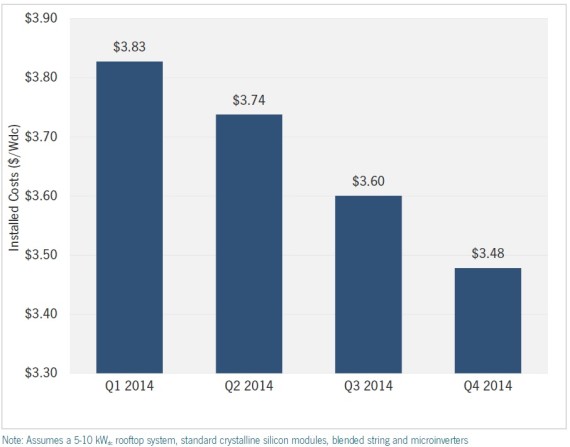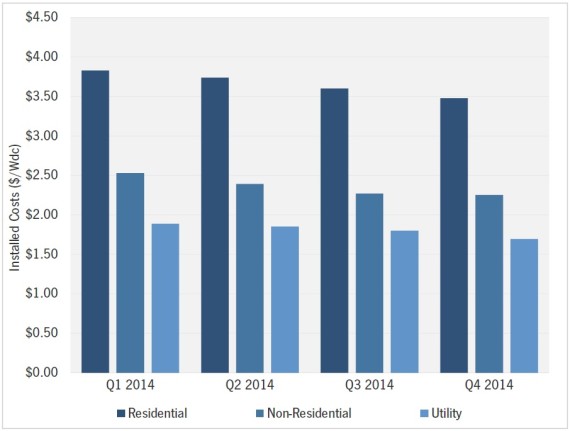I wrote an article a couple of years ago about how badly we overestimate the cost of solar power. Basically, the idea was that the cost of solar power had dropped a great deal in the previous several years, so if you had gotten a solar quote in 2008, the price of solar you had in your head was probably several times higher than the actual price of solar. If you had a price of solar from 1979 in your head, it would have been about 100 times too high. But how fast are solar prices dropping today?
First of all, let’s note that there are several things driving down solar costs. For one, as industries mature and grow, the greater demand leads to economies of scale in manufacturing, which brings down costs. Manufacturers as well as installers are also continuously improving and bringing their costs and prices down. It’s also worth noting that a number of strong solar incentives from governments have been cut or reduced in places around the world, which (theoretically) forces solar companies to bring their costs down in order to stay competitive. On the flip side, governmental policies that reduce red tape help a great deal to bring down costs, and there has been a strong push to cut such unnecessary burdens. Lastly, banks have become much more familiar and comfortable with solar, which has brought about more financing options and, most importantly, lower-cost financing.
But the question remains, how fast are solar prices dropping today? It’s hard to know, but it’s fun to look at some of the record-low solar prices that have been popping up in the past year or two. Check these out:
- New Mexico, USA (Feb 2013): 5.8 cents/kWh (presumably, 8.5 cents/kWh without subsidies)
- Texas, USA (May 2014): under 5 cents/kWh (presumably, under 7.1 cents/kWh without subsidies)
- Dubai, UAE (April 2015): 5.84 cents/kWh
- Texas, USA (July 2015): under 4 cents/kWh (presumably, under 5.7 cents/kWh without subsidies)
- Saudi Arabia (Aug 2015): under 5 cents/kWh
Naturally, those are for “utility-scale” solar power plants. Many people couldn’t care less about utility-scale solar but are curious about residential solar prices. We can’t track record-low residential prices like we can for large solar power plants, but market research from SEIA & GTM Research, from Lawrence Berkeley National Laboratory, and from Pick My Solar has shown that the downward price trend has been almost continuous. Here are a couple of recent charts from these solar price trackers:

US solar PV prices 1998–2014 graph via LBNL/SunShot

US installed solar PV prices via SEIA/GTM Research

US installed solar PV prices via SEIA/GTM Research
So, again, the story is probably this: If you got a price quote a year or two ago, it was probably quite a bit higher than a solar price quote you’d get today.